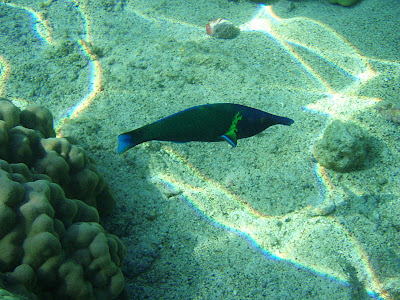Caustics produced by a glass of water

In optics, a caustic is the envelope of light rays reflected or refracted by a curved surface or object, or the projection of that envelope of rays on another surface. Caustic can also refer to the curve to which light rays are tangent, defining a boundary of an envelope of rays as a curve of concentrated light. Therefore in the image to the right, the caustics can be the patches of light or their bright edges. These shapes often have cusp singularities.
Such concentration of light, especially sunlight, can burn. The word caustic, in fact, comes from the Greek καυστός, burnt, via the Latin causticus, burning. A common situation where caustics are visible is when light shines on a drinking glass. The glass casts a shadow, but also produces a curved region of bright light. In ideal circumstances (including perfectly parallel rays, as if from a point source at infinity), a nephroid-shaped patch of light can be produced.[1] Rippling caustics are commonly formed when light shines through waves on a body of water.
In computer graphics, most modern rendering systems support caustics. Some of them even support volumetric caustics. This is accomplished by raytracing the possible paths of the light beam through the glass, accounting for the refraction and reflection. Photon mapping is one implementation of this.
I also found some good tutorial about Mental Ray Rendering, which is very useful to learn how to do these effects in Maya.



No comments:
Post a Comment